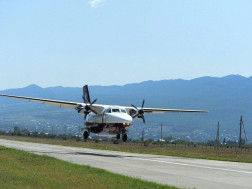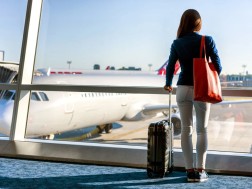Amid a slow recovery throughout 2021, global air travel demand last year was still 58.4% lower than the pre-pandemic level, the International Air Transport Association (IATA) said.
The figure is an improvement compared to 2020 when demand was down 65.8% from 2019, the group said in a statement.
Air travel demand is measured in revenue passenger kilometers (RPKs).
International passenger demand fell 75.5% compared with 2019, while load factor, or seat occupancy, dropped 24 percentage points to 58%.
Domestic demand declined 28.2% and load factor slipped by 9.3 percentage points to 74.3%.
According to IATA data, demand for air cargo swelled above the pre-pandemic level last year, registering a 6.9% jump compared to 2019.
Omicron travel restrictions slowed the recovery in international demand by about two weeks in December. International demand has been recovering at a pace of about four percentage points/month compared to 2019. Without Omicron, we would have expected international demand for the month of December to improve to around 56.5% below 2019 levels. Instead, volumes rose marginally to 58.4% below 2019 from -60.5% in November.
“Overall travel demand strengthened in 2021. That trend continued into December despite travel restrictions in the face of Omicron. That says a lot about the strength of passenger confidence and the desire to travel. The challenge for 2022 is to reinforce that confidence by normalizing travel. While international travel remains far from normal in many parts of the world, there is momentum in the right direction. Last week, France and Switzerland announced significant easing of measures. And yesterday the UK removed all testing requirements for vaccinated travelers. We hope others will follow their important lead, particularly in Asia where several key markets remain in virtual isolation,” said Willie Walsh, IATA’s Director General.
















